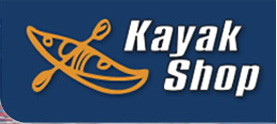 Loading... Please wait...
Loading... Please wait...Categories
- Home
- Dry Bags, Stuff Sacks, and Waterproof Containers
- SealLine Discovery™ Dry Bag - 20L
- Home
- Dry Bags, Stuff Sacks, and Waterproof Containers
- Dry Bags
- SealLine Discovery™ Dry Bag - 20L
Product Description
Made of ultra-durable materials, our versatile and waterproof Discovery™ Dry Bag features welded construction for lasting performance, plus an updated closure that makes it easy to achieve a tight seal for excellent protection against water, from day floats, overnight kayak trips, or overland expeditions.
The Discovery is available in 5L, 10L, 20L, 30L & 50L. This is the replacement for the Baja Dry bag so we will be stocking 5L in the future (10L listed separately)
- Built for the journey: Made of rugged, flexible, and fully waterproof materials designed to withstand frequent and demanding use.
- Light-colored interior: Significantly eases identification of contents within.*
- Oval bottom: Stable shape won't easily roll around; it's also easy to store, stack, and pack.
- Durably constructed: Fully welded seams result in stronger and more durably waterproof construction compared to sewn-and-taped seams.
- Tight, simple sealing: Updated DrySeal™ roll-top closure makes it easier and more intuitive to achieve an optimal seal.
- PVC-Free: Materials have a reduced environmental impact over vinyl-coated materials.
*Note: The light-colored interiors are achieved by using materials with non-dyed white threads that have a clear interior coating and a solid-colored exterior coating. The plaid bags use materials with dyed threads and clear coatings inside and out—they do not have as light of an interior as a solid-colored bag, though still maintain some translucence.
Specifications:
| 20L | |
| Weight: | 0.39kg |
| Height: | 53cm |
| Length: | 25cm |
| Width: | 15cm |
| Volume: | 20 litres |
| PVC Free: | Yes |
| Bottom Shape: | Oval |
| Closure: | Updated Dry Seal dual-strip roll-down |
| Material(s): | 300D 18 oz polyurethane-coated polyester |
| Country of Origin: | MADE IN U.S.A. OF U.S. AND IMPORTED MATERIALS |
FAQ's:
These dry bags are sized volumetrically in litres. To help illustrate how those volumes translate to real world use, here are some typical things you might put in various sizes of dry bags:
- 5L = a few meals for two, baselayers, or other small essentials
- 10L = a down jacket, food for the weekend, or a small sleeping bag
- 20L = a typical sleeping bag, a couple changes of clothes, or bulkier gear items like a tent or camp kitchen setups
SealLine products use three ratings to describe water resistance:
- Splashproof: Withstands light rain and splashes. Only some of our products fall into this category. Suitable for use where light water resistance is sufficient, such as summer backpacking.
- Waterproof: Withstands quick submersions. Most of our bags fall into this category and are suitable for canoe, kayak and rafting use where boats may tip, flip or be swamped. This is the rating that applies to the Discovery Bags.
- Submersible: Withstands 1 meter of submersion for 30 minutes (IP-67 standard). Suitable for use in extreme and prolonged wet situations.
With such ratings, water resistance depends on the user carefully and properly sealing the closure. For roll-top closures, this means a minimum of three tight, wrinkle-free rolls. For zipper closures, the zipper must be completely and properly closed.
SealLine's premium polyurethane-coated (aka, PVC-free) dry bags offer significantly greater puncture and abrasion resistance than vinyl-coated dry bags, while also being lighter weight. For example, our PVC-free dry bags weigh approximately 8-14 oz. less than our vinyl-coated dry bags. In addition, the PVC-free polyurethane coatings are less harmful to the environment than vinyl coatings.
SealLine's vinyl-coated dry bags are economical and resistant to punctures, tears, and mildew. They remain pliable at low temperatures and resist cracking.
Our exclusive DrySeal roll-top closure is easily identified by its two separate stiffening strips below the opening of a roll-top product. This makes it easier and more intuitive to achieve an optimal seal—for the first “roll” in closing the top, simply fold the top over between the two strips of material, then roll closed at least two more times.
This design also amplifies protection from the elements by adding an additional “virtual” roll.
We recommend a minimum of 3 folds (aka “rolls”) to properly seal a roll-top dry bag. For an optimal seal:
- a. Make sure the stiff sealing strips are wrinkle-free. Close the dry bag so that the sealing strips are pressed together
- b. While holding strips together, push down to “burp” out trapped air. Once trapped air has been “burped” out, tightly fold the top over several times so that the roll-top closure has been folded at least 3 times
- c. Connect the buckle in the direction opposite to the direction the material was folded, or along the sides when side buckles are present
Welded seams use radio frequencies (RF) to join two pieces of coated fabric together at the molecular level, effectively bonding them together as one. This strong, reliably waterproof construction method is far superior to sewn-and-taped seams.
With sewn-and-taped seams, two pieces of coated fabric are held together with thread and a piece of protective tape is placed over the threads and seam to provide water protection.
A RF welded seam can withstand up to 2x more stress than a sewn-and-taped seam, resulting in a more protective and longer-lasting seam. This is why SealLine uses welded seams with all of our dry bags.
Regularly cleaning and maintaining your dry bag will substantially increase its life. After each use, dry bags should be cleaned and aired out. Dirty bags can be washed with a soapy sponge and rinsed, allowing them to air dry. Store clean dry bags completely dry, inside out. Keep all insect repellents and solvents from making direct contact with dry bags—if contact occurs, wash the bag thoroughly.
For vinyl-coated dry bags, such as the Baja™ dry bags, an occasional wipe down with a vinyl preservative, such as Armor All®, will help maintain the vinyl-coated bag’s suppleness. (Armor All® is an Armor All Products registered trademark.)
Use of a vinyl preservative is not necessary for polyurethane-coated (aka, PVC-free) dry bags.








